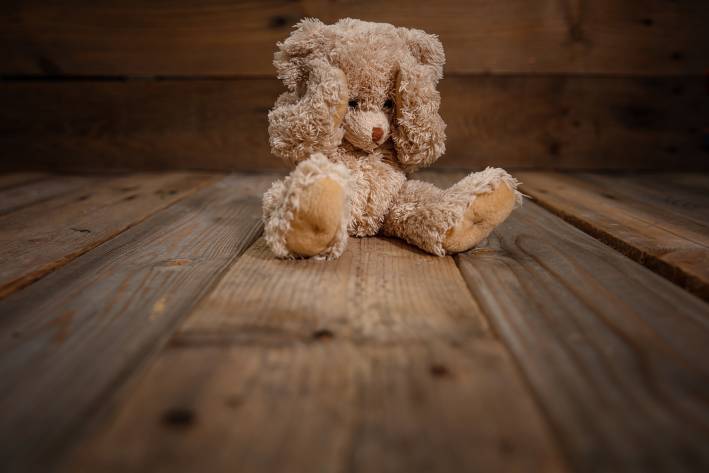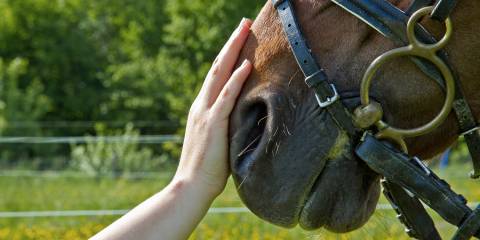Growing up, Nicole LaFoe recalls, “I never felt safe.” How could she? Her mother was emotionally and physically abusive, and both her parents were abusing substances. They split up when she was four, and the family moved nearly 40 times. By her teens, she was using and selling drugs.
“I became very adaptable and hyper-vigilant, and a big people-pleaser,” says LaFoe, 42, a clinical coordinator in Portland, OR. “It was all about survival for me.”
LaFoe’s childhood was full of adverse childhood experiences, or ACEs. Research has found a link between the effect of ACEs and the risk of medical conditions in adulthood—seven of the 10 leading causes of death—and mental and behavioral problems. LaFoe’s ACEs led her to suicide attempts, addiction, prison, and serious illness. Fortunately, she learned that with the right help and habits, it’s possible to heal from the childhood harm.
It starts with being aware of what an ACE is.
What are ACEs?
“It’s anything that causes you to experience acute or prolonged physical stress with an increased heart rate and elevated respiration. It can be one traumatic event or constant, everyday, low-level background stress,” says Jennifer Hays-Grudo, PhD, developmental psychologist and professor of psychiatry at Oklahoma State University. She is coauthor of Adverse and Protective Childhood Experiences: A Developmental Perspective (American Psychological Association, 2020).
What Causes ACEs?
The US Centers for Disease Control and Prevention teamed with Kaiser-Permanente to conduct the original ACE study (1995-97), with 17,000 adult participants. Physicians Vincent Felitti and Robert Anda, the study’s researchers who coined the term ACE, uncovered the most common ones:
- Sexual abuse
- Physical and emotional abuse and neglect
- Parents’ divorce or separation
- Witnessing violence toward a mother or stepmother
- A household member who is:
- addicted to alcohol or drugs
- suicidal or mentally ill
- imprisoned
By the Numbers
The study’s 10 childhood-related questions for participants are used today to arrive at a person’s ACE score, ranging from 1 to 10 for the number of ACEs they experienced. “But there are dozens more,” says Glenn R. Schiraldi, PhD, founder of Resilience Training International in New Smyrna Beach, FL. You can find a slightly adapted version of those 10 questions, and an expanded checklist, in his in-depth and informative The Adverse Childhood Experiences Recovery Workbook (New Harbinger Publications, 2021). You can find similar questions from the American Society for the Positive Care of Children at www.AmericanSPCC.org. Answering can help you get to the bottom of your health issues and risks.
“ACEs tend to co-occur and accumulate,” says Dr. Hays-Grudo. “For instance, a mother’s mental illness can cause emotional abuse or domestic violence. As ACEs increase, so does the likelihood of other negative outcomes for the child, such as physical, developmental, and social problems.”
Symptoms and Effects of ACES
One ACE is all it takes for a possible negative reaction. ACEs bombard the body with years of overexposure to the hormones that hurl it into the survival mode of fight, flight, or freeze. “So, your brain gets wired for that, instead of your higher-order thought process that helps you regulate emotions and physical stress,” says Dr. Hays-Grudo. “This may cause you to overreact, be overly sensitive, or experience PTSD as an adult, leading to psychological problems and addictions.”
Alcohol and drug abuse, smoking, depression, sexual promiscuity, and obesity are common for people with multiple ACEs. LaFoe used and sold methamphetamine for most of her 20s, landing her in federal prison for 40 months. ACEs make it hard for some people to form healthy relationships, hold onto jobs, or manage their finances.
“A body awash in chemicals produced by stress also causes physical illness, all rooted in inflammation,” says Dr. Hays-Grudo. Those with an ACE score of 4 or higher face greater risks of cancer, autoimmune and cardiovascular diseases, diabetes, and emphysema or chronic bronchitis. LaFoe has advanced osteoarthritis, a thyroid disease, and heart problems. She also has the determination to keep changing her life for the better. From a mentor and programs she benefited from while in jail to the therapist she regularly sees, “I have remained in a state of gratitude for each step of my journey,” she says.
Approaches to Recovery
Deep breathing, mindfulness meditation, yoga, strong social ties, a healthy lifestyle, and self-care practices can help with recovery from ACEs. So can the eight-step process in Dr. Schiraldi’s book—from calming the brain and having self-compassion to imagining the best childhood and working with a trauma-focused therapist. He says, “My hope is that people can realize that they don’t have to suffer for decades. There are ways to heal on your own, and there’s help.”
LaFoe admits, “The darkness still whispers in my ear, so I do pray a lot. My prayers are conversations with the universe. I seek and I listen. And every day I grow in ways to own my life.”





